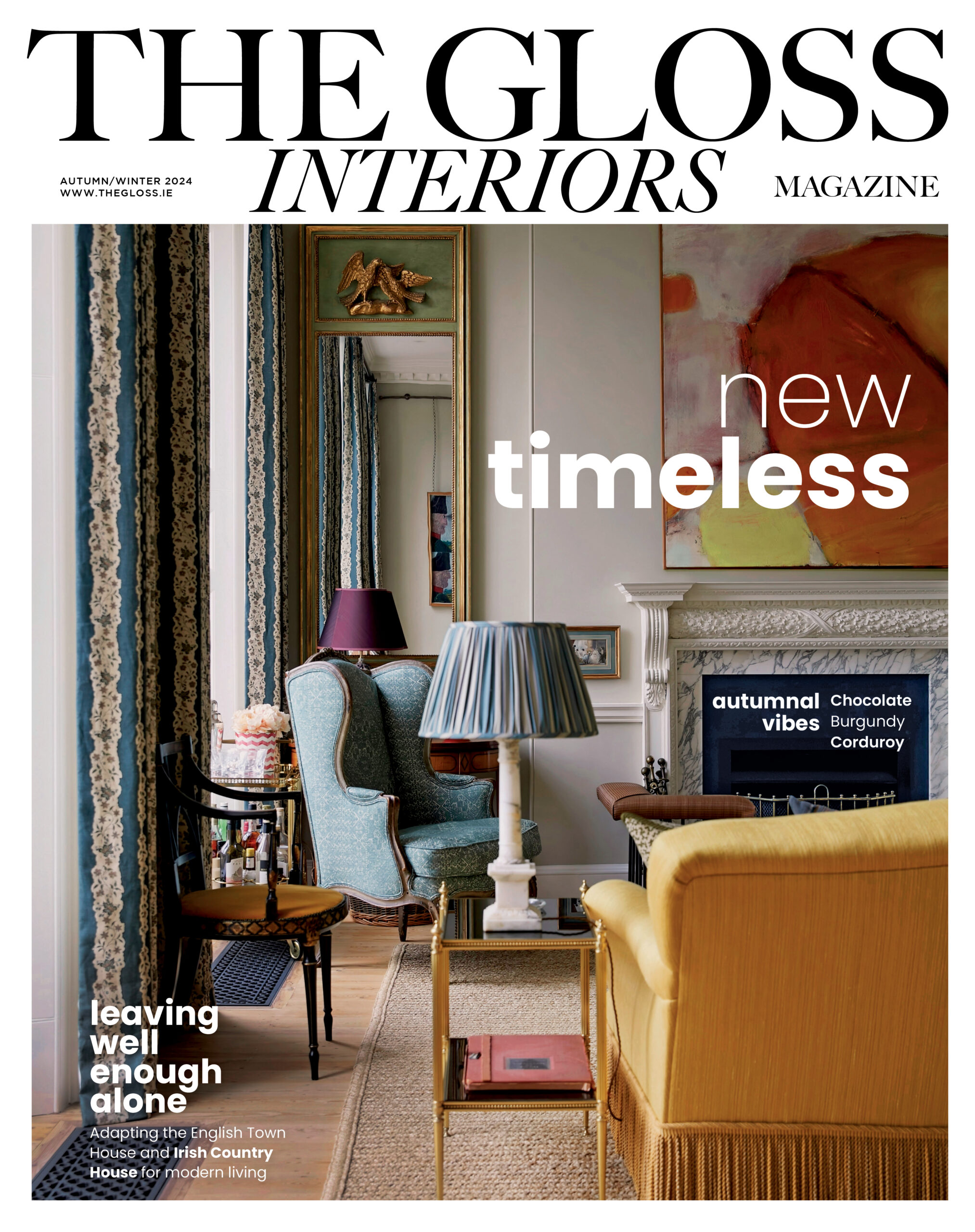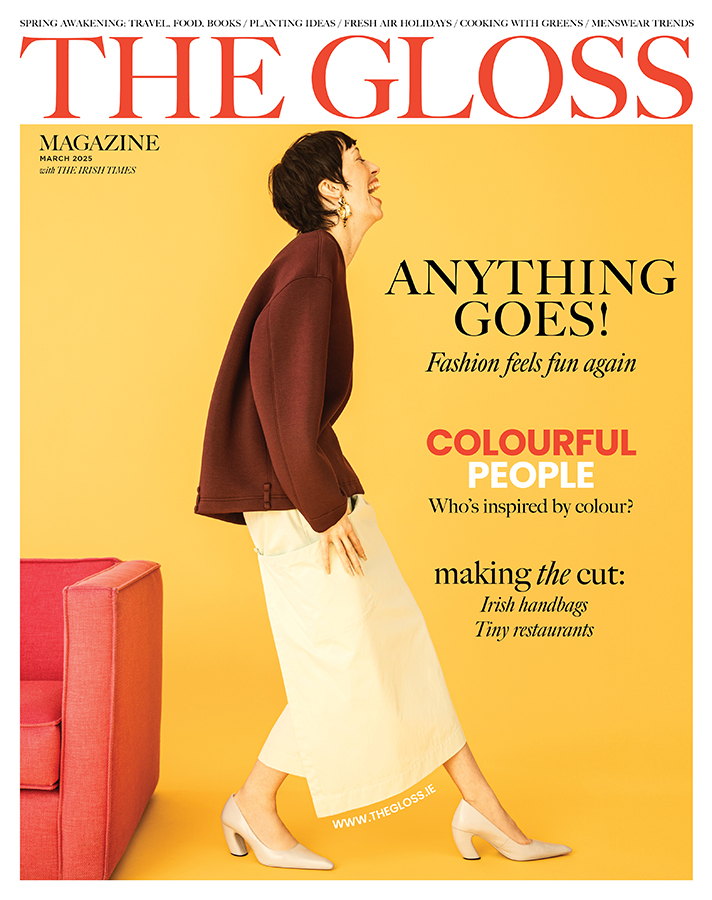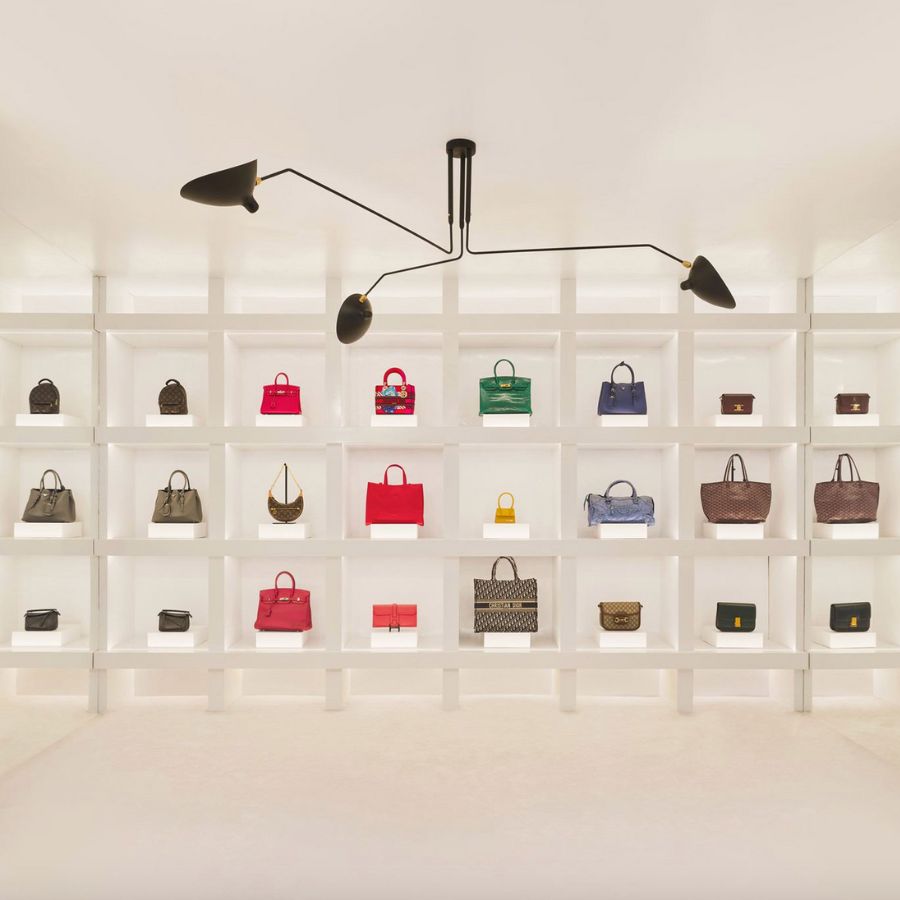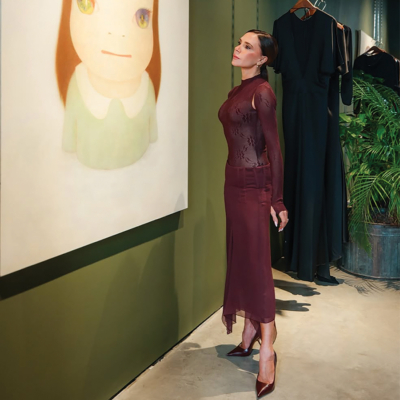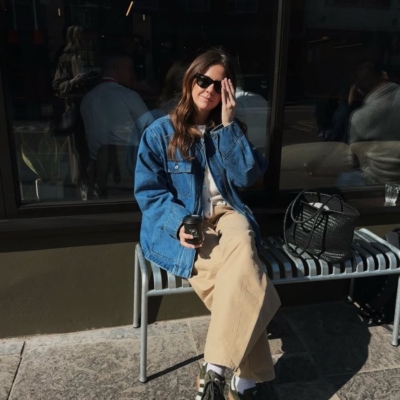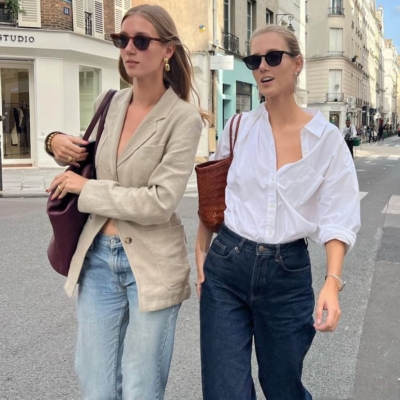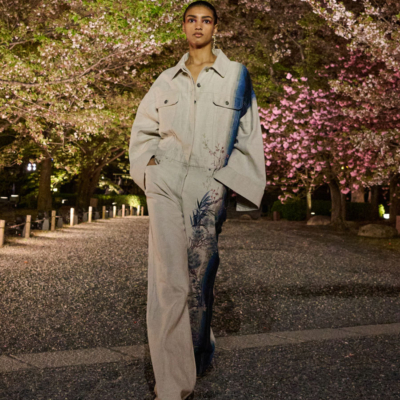Buyer beware: Elaine Maguire O’Connor explores the counterfeit clothing and accessories boom threatening the luxury resale market …
A Gucci Blondie handbag sells on Net-A-Porter for €1,900, but if you know where to shop you can pick one up – in pristine condition – for just €1,300. The price drops to €850 if you’re happy to accept one in “very good condition”. As a pre-loved bag, it may have minor scratches on the surface but for that kind of saving, many will happily overlook them. But what if it turns out the bag is not a genuine Gucci? It might look, feel and smell the same but what if it is in fact a “super-fake” knock off? Would you still want it?
With increasing consumer awareness of both the ethical implications and the environmental impact that our fashion habits have on the planet and its inhabitants, the secondhand clothing market has boomed. Companies including The Real Real, Vestiaire Collective and Siopaella (Ireland’s largest designer reseller) allow consumers to shop designer clothing at deep discounts, sell unwanted fashion items and track down hard to find products, all while reducing their carbon footprint.
As resale becomes the norm, demand is only expected to grow and estimates put the value of the circular fashion industry at a staggering $700bn by 2030. However, as circular fashion has evolved, it has also been embraced by unscrupulous sellers of counterfeit clothing and handbags who view luxury resale platforms as an easy avenue to push their illicit products.
“… technological advances allow counterfeiters to create exact replicas, almost impossible to distinguish from the real thing without beady eye inspection.”
Counterfeits are not a new phenomenon. In ancient Rome the practice of copycat designers replicating goods and selling them at marked-down prices in markets was so prevalent that the state introduced laws to prohibit it. In more recent times, visitors to New York’s Canal Street have picked up cheap knock-off handbags that use PVC instead of leather, often with misspelled logos that remove all doubt as to whether the ‘Femdi’ is an original. Stroll the beaches of Playa Blanca or Teguise in Lanzarote and you might find yourself being offered a questionable ‘Dior’ book tote. But the past decade has seen an explosion in counterfeit products as technological advances allow counterfeiters to create exact replicas, almost impossible to distinguish from the real thing without beady eye inspection. According to a joint report by the European Commission (EC) and the EU Intellectual Property Office, over 152 million counterfeit items worth an estimated €3.4bn were seized in the EU in 2023. It has now been estimated that up to ten per cent of all designer goods sold are knock-offs.
The rise of super fakes – knock-offs so meticulously crafted that they are indistinguishable from a genuine luxury handbag – and the unethical sellers who profit from them was explored in detail by Kirstin Chen in her 2022 novel Counterfeit, which tells the story of two Asian American women who band together to grow a fraudulent replica handbag scheme into a global enterprise. While researching it, she tells me that she visited Baiyun World Leather Trading Centre in the Chinese city of Guangzhou, which has been described as the epicentre of the world’s counterfeit leather industry. The quality of the bags she inspected, she says, was impressive, particularly at the higher end of the spectrum. But what surprised her the most was the openness. “You have this gigantic shopping mall filled with highly recognisable counterfeits right in the centre of the city – there’s nothing temporary or hidden about it,” she explains. It’s from markets and trading centres like Baiyun that handbags destined for the European and US markets are sourced before being imported and sold through the secondhand marketplace, with keen sellers now approaching unsuspecting buyers directly via Instagram DMs to display their wares: “Herme?s at unbeatable price” read a recent message.
“A fake will never be a substitute for the real thing, regardless of how closely they resemble it.”
For the luxury resale industry, the escalating counterfeit problem is proving a costly and potentially devastating complication. Internet forums are rife with stories of disgruntled customers who have purchased designer products only to discover upon closer scrutiny that they’ve unwittingly purchased a knock-off. The resulting PR nightmare when a store is named and shamed for selling a fake bag is not one any business wants to find itself in. As a result, the role of authenticator has fast become one of the most important jobs in the business. While there is no formal qualification or degree that certifies someone as an authenticator – it’s not a role that existed even a decade ago – the larger resale platforms like Vestiaire Collective reportedly provide months of training on the authentication process and only when the management team is satisfied can an authenticator conduct independent assessments.
Clearly, attention to detail and knowledge of sewing and design techniques are paramount. An Hermès bag, for example, uses the “piqué sellier”, a diagonal stitch. Knowledge of a luxury brand’s history and designs is also important, with familiarity with what models were produced in what year and in what colours a necessity. The process is fascinating. As well as visually inspecting for obvious telltale signs like uneven stitching or discoloured fabric, authenticators are trained to sniff out a fake, literally. One authenticator at an online resale platform tells me that she can not only tell if a bag is fake from how it smells but can also correctly guess a luxury brand entirely based on scent. Gucci, apparently, has an earthy, musky scent.
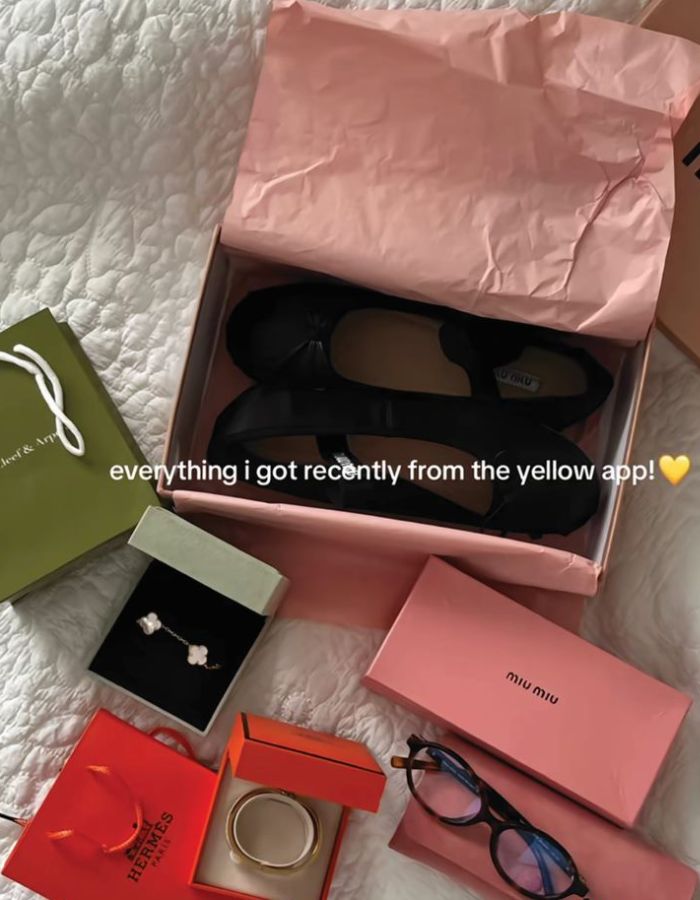
Shoppers on TikTok present their ‘luxury’ hauls ordered from a China-based marketplace.
Without authenticators, the luxury resale industry would not be able to operate. Worse perhaps than the resulting reputational damage that arises when a company is accused of selling knock-offs, are the restrictions and fines arising from the growing number of legal disputes which resale merchants are finding themselves at the centre of. The problem with counterfeits in the resale market has not gone unnoticed by luxury brands and a slew of lawsuits taken against resellers including The Real Real and What Goes Around Comes Around (WGACA) have highlighted the dangerous repercussions for those accused of selling fakes.
Last year, following a six-year legal battle, pre-loved luxury fashion retailer WGACA was found guilty of selling counterfeit handbags and ordered to pay Chanel $4m in damages. One of Chanel’s arguments, as well as claiming that the reseller was selling counterfeits, was that by using Chanel products in its advertising – a common marketing tactic in the resale market – WGACA was deceiving consumers into believing that it had an official relationship with the luxury brand. It stands to reason that Chanel, a brand for which exclusivity is so ingrained in its DNA, was quick to stamp down on any suggestion that it was connected to a company it believed was selling counterfeit versions of its products.
While technology is enabling counterfeiters to create high-quality fakes, it’s also aiding authenticators in recognising them. Ralph Lauren prints QR codes next to product care labels which link to digital identities. These can be scanned by customers using smartphones to determine if the item is genuine. Blockchain technology is also being developed with the promise of revolutionising the process. The Aura Blockchain Consortium, which is backed by both LVMH and the Prada Group, has created digital product passports which will allow each item to be traced. However, more often than not, counterfeiters are only a short step behind any attempt to slow them in their tracks. The Real Real, which in addition to hand-inspecting each item has been using AI in its authentication process since 2019, acknowledges on its website that even AI methods need to “continuously evolve” and are “constantly being refined”, as counterfeiters adapt and learn how to circumnavigate the processes.

Shoppers on TikTok present their ‘luxury’ hauls ordered from a China-based marketplace.
“If you do have a handbag that you suspect isn’t the real deal, companies specialising in authentication are the best port of call.”
Last year, The Real Real staged an installation of counterfeit handbags in a shop along New York’s Canal Street (a street synonymous with counterfeit culture), containing fakes which had been identified during its authentication processes. Visitors to the “shop” were not able to purchase these items, but they were invited to drop off their own fakes, which Vestiaire said it would destroy to remove them from circulation, for a chance to win a real handbag.
For customers, the question that now arises is, if it’s that difficult for even trained authenticators to distinguish between counterfeits and the originals, can they be expected to care, especially when they can potentially save hundreds of euros? Fuelled by social media, a cultural shift in consumer behaviour has made counterfeits a more palatable prospect for a younger demographic. While previous generations regarded counterfeits as an embarrassing fashion faux pas, Gen Z instead view them as a savvy money saving tool, ordering knockoffs from websites like China- based wholesale marketplace DHgate and happily sharing their findings across social media platforms. In Ireland, almost 50 per cent of 15 to 24-year-olds believe that it is acceptable to buy phony products if the price of the original is too high. And while counterfeits are routinely linked to labour abuses, similar allegations levied against luxury designer brands – last year Italian authorities investigated Armani over allegations of worker exploitation, for instance – have left many customers angry, confused and unconvinced that original luxury products are the more ethical choice.
But for the majority of luxury shoppers, I suspect, a fake will never be a substitute for the real thing, regardless of how closely it resembles it. In the world of super-fakes, shopping the pre-loved market may appear more trouble than it is worth but there are steps customers can take to reduce their chances of being duped. Shopping from a recognised store which is transparent about its authentication process is the safest way to avoid counterfeits. Larger secondhand specialists usually detail their authentication methods on their websites. For smaller independent resellers, simply asking how they authenticate designer goods can be revealing – honest and reliable sellers are usually happy to explain their process. Those who won’t, or who get defensive when asked, are best avoided. Similarly, sellers without a clear returns policy in place are a red flag.
If you do have a handbag that you suspect isn’t the real deal, companies specialising in authentication are the best port of call. In addition to examining every item that passes through its own shops, Siopaella provides an independent authentication service for designer handbags and accessories. And while it’s difficult for anyone to be 100 per cent certain if an item is legitimate, someone who examines luxury goods day in, day out, will spot flaws that most of us wouldn’t even think to look for.



